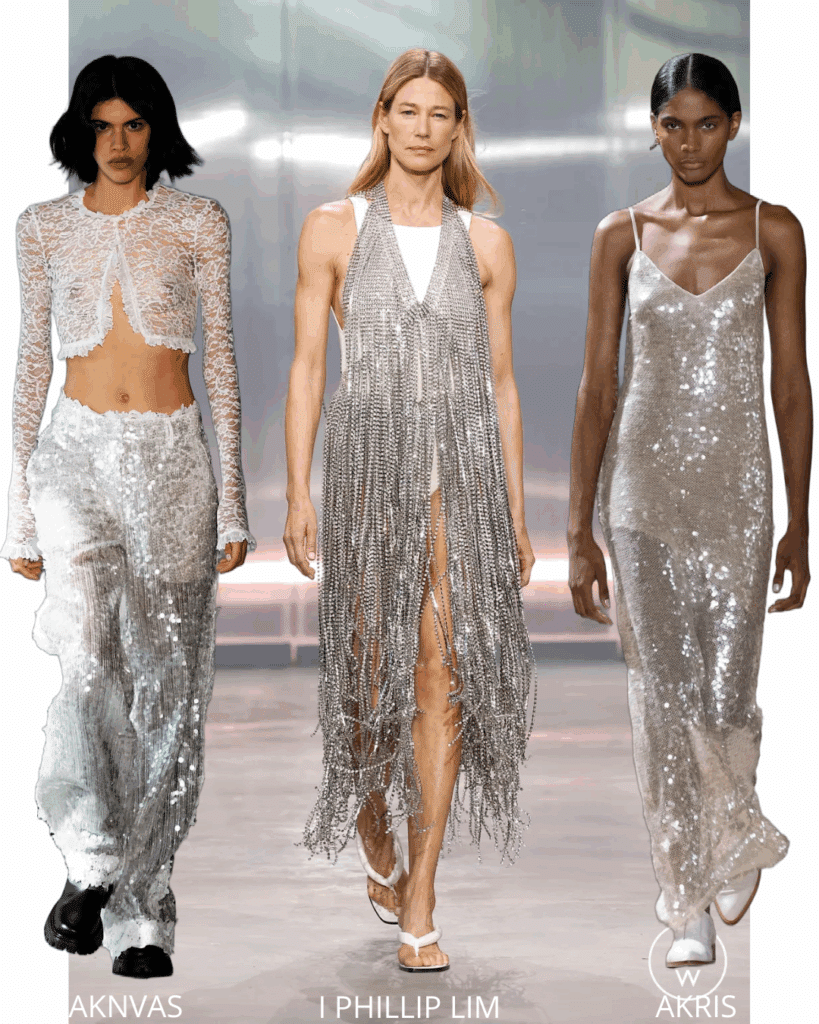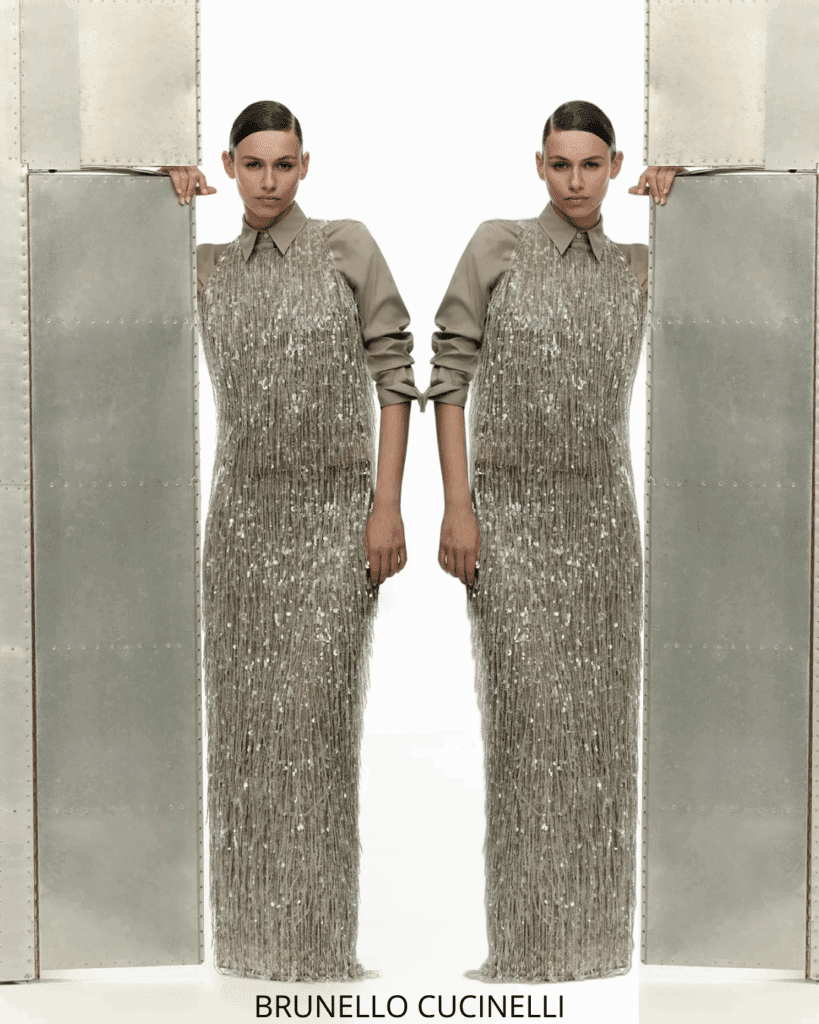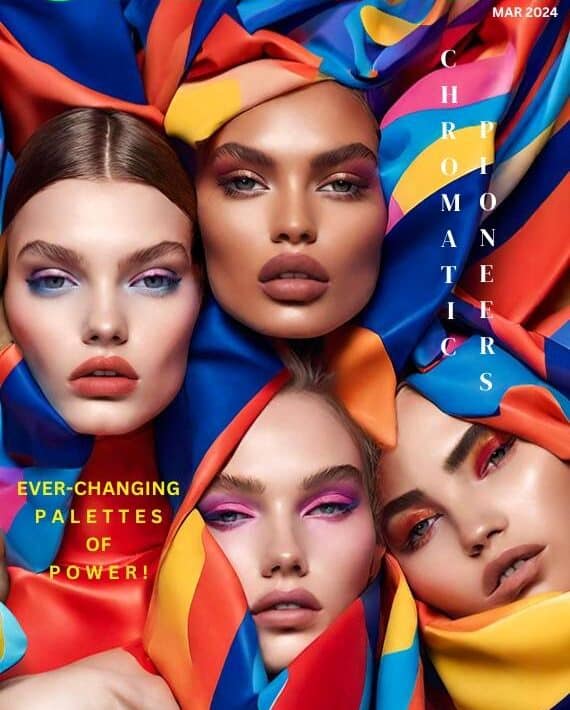Prismatic Sheers and Mirrored Vynils: What Lies Behind the Dazzle of the Latest Fashion Collections?


Exploring contemporary Aesthetics, between Self-confidence and Fragility
There is a beautiful expression, which is “Shlonak?” (“Shlonek?” for the feminine form). Arabs from the Middle East informally use to say “How are you?”. Actually, while addressing a person this way, you are literally asking “Which color are you?” It goes without saying that you will not need to respond by mentioning a specific color, but what I would love to emphasize is the evocative power of this expression, as it recalls how colors significantly influence our state of mind, impacting emotions, mood and even our behaviour.
The impact colors have on our brain has been widely discussed here. You might already know that warm shades like red, orange and yellow tend to evoke feelings of energy and excitement, while cool hues such as blue, green and purpleare associated with calmness, relaxation and serenity. It is also well known that color psychology can be nuanced and influenced by cultural background, personal experiences and the specific context in which the color is perceived.
But what happens to our brain when before an entire range of colors instead of a single nuance? Do emotions multiply as well?
In the realm of fashion, prismatic sheers, sparkling fabrics and glitters have been a major trend on the runaways in recent collections. From 3.1 PHILLIP LIM, ROKSANDA and AKNVAS, to AKRIS, ATLEIN and BRUNELLO CUCINELLI (just to mention a few), everything speaks about “Shimmering” and “Dazzling,” which inevitably lead the observer to a melting pot of the colors light is composed of. Now the question is: do contemporary designers just want to pay a tribute to the colourful 80s with their legendary discos, or is there some hidden meaning behind these latest fashion choices?



Layouts By Dr. Manuela Pirola; Image Source: Tagwalk
Relevant insights on this topic come from the so-called “Enclothed Cognition,” which explores the systematic influence that clothing has on a wearer’s psychological state, mental process and behaviors. Enclothed Cognition basically revolves around the idea that the clothes we wear can affect how we feel and act, beyond just their aesthetic value.
In this perspective, we can note that prismatic sheers, holographic patterns, along with other glittering trends tap into an atavic human attraction to light and shiny objects, which—from a psychological angle—evoke feelings of excitement, optimism and, of course, luxury. Interesting to know that, according to some experts, this attraction might stem from our evolutionary past, where glittering surfaces, like water sources, signaled life and abundance. These trends can boost mood, enhance self-expression and create a strong identity. Sparkly clothing can trigger positive emotions, including excitement, optimism and even a sense of power. Trying out new trends, like prismatic sheers, provides a dopamine rush, making us feel more confident, rewarded and excited. In other words, sparkle and shine can make a statement and draw attention, thus influencing how others perceive the wearer.
The use of fabrics with mirrored effects, specifically mirrored vynils for human styling, is another trend which is gaining popularity within fashion. With advancements in technology, such as interactive mirrors and smart textiles, the potential for mirrored fabrics to play an even greater role in fashion psychology is vast. Designers are increasingly exploring the use of these materials not only for aesthetic purposes but also to evoke specific psychological responses.Mirrored fabrics are undoubtedly attention-grabbing, making the wearer stand out and potentially influencing how others perceive their mood, personality and style. The way a mirrored garment reflects light and movement might also create a sense of intrigue depending on the overall style and context.
But while, on a hand, mirrored fabrics are chosen to express individuality and boost confidence through eye-catching garments, on the other hand their reflective surface may heighten an individual’s awareness of their own body and movements, potentially leading to a more critical or self-conscious view of their appearance. The mirror’s reflection can sometimes distort perceptions of body shape and size, particularly in clothing that emphasizes or exaggerates certain features. This can negatively impact self-esteem and body image.
To a certain extent, we are witnessing—in fashion—a sort of transposition of “the Theme of the Double” present in some novels of the late nineteenth–early twentieth century, like “The Picture of Dorian Gray” by Oscar Wilde. The Double is interpreted as an exploration of two sides of the same personality, generally a good one and a bad one. When Dorian Gray, in love with his beauty, realizes that his portrait is getting uglier and uglier, as a symbol of the dark side of his hedonism, the protagonist—the icon of Aestheticism—does not recognize himself anymore.
The idea that we have another ‘self’, that we are not a single identity with clear boundaries, is a disturbing one that literature has explored for generations.
At this point, we should question ourselves whether today’s fashion is subtly replicating the same theme. Is it possible that behind the glitter of shiny and mirrored fabrics, potentially conveying self-confidence and optimism, lies instead the fragility of contemporary man? Food for your thoughts.




